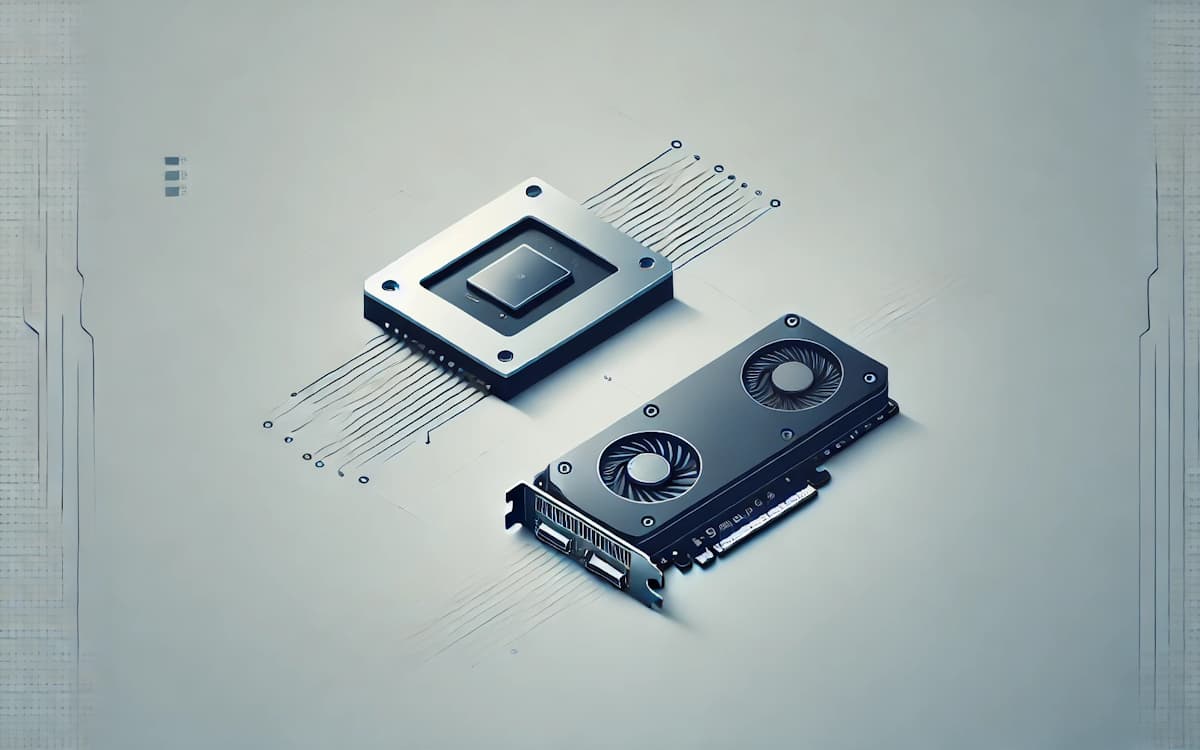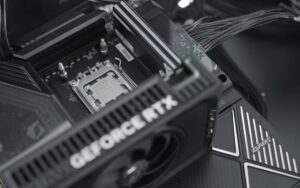
Many people who are buying a new computer, especially those who are not familiar with technology, are faced with the question: What is the difference between an integrated video card and a dedicated one?
It is common for the lay public not to fully understand how each type of GPU affects the equipment’s performance, nor the reasons for choosing between one or the other.
This lack of clarity can generate uncertainty about what will be more advantageous: investing in a more expensive and powerful machine or opting for a simpler and more economical alternative.
What is an integrated graphics card?
The integrated graphics card is a type of GPU (graphics processing unit) that is already built into the computer’s processor or motherboard. Instead of having dedicated memory, it uses part of the system’s RAM memory to perform graphical tasks, such as displaying videos, rendering images and playing animations.
Its energy efficiency is one of its great advantages: it consumes less energy and generates less heat compared to a dedicated card, which contributes to better battery life in portable devices.
Because it is incorporated directly into the processor, the integrated GPU is found most frequently in notebooks and smaller computers, like mini PCs.
Despite their limitations in terms of performance, integrated cards have evolved considerably in recent years. Newer technologies, like AMD Ryzen processors with integrated graphics (known as APUs), offer enough performance to run light games and basic applications smoothly.
Therefore, these GPUs are ideal for everyday tasks, such as browsing the internet, playing older games or games with lower video settings, watching high-resolution videos and working with documents or spreadsheets.
However, the fact that sharing memory and processing with the CPU can become a bottleneck in situations that require more advanced and constant graphics power, such as high-end games or video editing software.
Precisely in these cases, the integrated GPU may not be able to supply the desired performance, resulting in crashes or a drop in performance.
And what is a dedicated graphics card?
The dedicated video card is a Processor-independent GPU, equipped with its own memory and exclusive resources for graphics processing.
Unlike the integrated GPU, it does not share RAM with the system, as it has a dedicated VRAM (video memory), which allows for superior performance in more demanding visual tasks.
These boards are designed to activities that demand high graphic performance, such as high-end gaming, 3D rendering, high-resolution video editing, and complex simulations.

Precisely because they are isolated components, they consume more energy and generate more heat, which is why they are generally equipped with their own cooling systems, such as fans and heat sinks. Some even support the implementation of liquid cooling out of the box.
Dedicated GPUs are more common on desktops, but they can also be found in some notebooks, especially those aimed at gamers or design professionals. However, the presence of this type of card in laptops can considerably increase cost and energy consumption, impacting portability and battery life.
In addition to superior performance, dedicated cards allow you to configure graphics at higher levelsensuring greater fluidity and visual quality, which is essential for those who work with complex graphics, as the calculation capacity of the dedicated GPU frees the processor from intensive tasks, avoiding bottlenecks and keeping the system more responsive.
Despite their high performance, dedicated cards require a substantially larger investmentboth in acquisition and maintenance, as they may require driver updates and cooling care.
Therefore, the cost-benefit of this choice depends directly on the usage profile: casual users may not notice major advantages, while gamers and creative professionals tend to benefit enormously in terms of productivity from this type of GPU.
What are the advantages and disadvantages of each?
Integrated GPUs are more energy efficient and generally power more affordable devices, such as lightweight notebooks and everyday computers.
The dedicated ones are aimed at an audience that needs high performance, such as gamers and editing professionals, but this gain in performance comes with greater energy consumption and the need for efficient cooling.
Therefore, it is important to analyze your current use and also consider future needs, avoiding additional expenses with upgrades.
| Feature | Integrated graphics card | Dedicated video card |
|---|---|---|
| Performance | Limited to simple tasks and light games or games configured with fewer resources | Excellent for heavy games and complex graphics software |
| Memory | Shares RAM memory with the system | It has dedicated VRAM memory, without interfering with the system RAM |
| Power consumption | Low, contributing to greater battery life | High, requiring more energy and generating more heat |
| Cost | More economical, ideal for casual users | More expensive, but essential for gamers and professionals |
| Ideal applications | Web browsing, videos, administrative tasks | Video editing, 3D rendering, AAA games |
| Portability | Present in laptops and compact computers | More common on desktops, found on some gaming notebooks |
| Heat and cooling | Generates little heat, eliminating the need for robust cooling systems | Generates a lot of heat and requires dedicated ventilation systems |
| Ease of maintenance | Less maintenance as it is integrated into the processor | Requires attention with drivers and cooling care |
| Update | Impossible to exchange or update | Can be replaced or updated on desktops |
Integrated or dedicated graphics card: which one to choose?
As we saw above, the choice between an integrated or dedicated graphics card depends directly on the usage profile and specific demands of each user.
There is no universal answer: the best option is the one that aligns with your goals, budget and performance expectations. For those who use their computer for everyday tasks, such as browsing the internet, watching videos or working with AI or software that doesn’t use 3D all the time, an integrated GPU is usually more than enough.
In fact, this type of card is also recommended for those who need portability and greater battery life, such as students and professionals who are constantly on the move.
On the other hand, if the focus is high graphics performance — such as modern gaming, high-resolution video editing, 3D rendering, or complex modeling — then a dedicated GPU is the appropriate choice.
This is because, despite the higher cost, the card delivers fluidity in applications and avoids problems such as crashes or drops in performance. We also have the prospect that, on desktops, a dedicated GPU allows future updates, giving the system more longevity.
It is also possible to combine both types in some cases. Some notebooks and systems allow switching between integrated and dedicated GPU through technologies such as “switchable graphics”, optimizing power consumption when high performance is not necessary. Thus, the user can have the best of both worlds: high graphics performance and greater battery life.
Therefore, the final decision must also consider the available budget. While systems with dedicated GPUs are more expensive, they can be an essential investment for anyone who works or plays with software that requires high performance.
Now, for those looking for a more economical and efficient solution for their daily lives, the integrated GPU will be more than enough.
Source: https://www.adrenaline.com.br/hardware/placa-video-integrada-dedicada/


